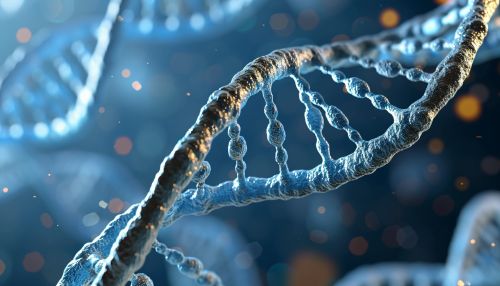Short Tandem Repeats (STRs)
Introduction
Short Tandem Repeats (STRs) are sequences of DNA that repeat consecutively in a head-to-tail manner. These sequences are typically 2-6 base pairs in length and can repeat hundreds of times. STRs are found throughout the human genome and play a crucial role in genetic research and forensic science.


Structure and Function
STRs consist of a specific sequence of DNA bases (adenine, thymine, guanine, and cytosine) that repeat in a consecutive manner. The number of repeats varies between individuals, making STRs a useful tool in genetic identification.
The function of STRs in the genome is not entirely understood. However, they are believed to play a role in DNA replication and repair, chromosome stability, and gene regulation. STRs are also involved in the formation of heterochromatin, a tightly packed form of DNA that is important for maintaining the structure of chromosomes and regulating gene expression.
Genetic Variation
The number of repeats in an STR can vary greatly between individuals and populations, leading to a high level of genetic diversity. This variation is caused by mutations, specifically insertion or deletion events, that alter the number of repeats. These mutations occur at a higher rate in STRs compared to other regions of the genome, making them a valuable tool for studying population genetics and evolutionary biology.
STRs in Genetic Research
STRs are widely used in genetic research due to their high mutation rate and the ease with which they can be analyzed. They are commonly used in population genetic studies to assess genetic diversity and population structure. STRs are also used in quantitative genetic studies to identify genes associated with complex traits and diseases.
In addition, STRs are used in genetic mapping and linkage analysis to locate genes on chromosomes. They are particularly useful in these applications because they are highly polymorphic, meaning they have many different forms, and are evenly distributed throughout the genome.
STRs in Forensic Science
In forensic science, STRs are used to create DNA profiles for individual identification. This technique, known as STR typing or DNA fingerprinting, involves comparing the number of repeats in specific STR loci between different samples. Because the number of repeats at each locus is highly variable between individuals, STR typing can provide a unique genetic profile for each person.
STR typing is commonly used in criminal investigations to identify suspects or victims based on DNA evidence. It is also used in paternity testing and missing person investigations. In addition, STR typing is used in wildlife forensics to identify illegally traded species and in conservation genetics to assess genetic diversity in endangered species.
Challenges and Limitations
While STRs are a powerful tool in genetic research and forensic science, there are some challenges and limitations associated with their use. One of the main challenges is the high mutation rate of STRs, which can lead to errors in STR typing. This is particularly problematic in forensic applications, where accurate identification is crucial.
Another limitation is the difficulty in analyzing STRs in mixed DNA samples, such as those commonly found at crime scenes. In these cases, it can be difficult to distinguish between the STR profiles of different individuals.
Finally, while STRs are highly variable between individuals, they are less variable between closely related individuals. This can make it difficult to distinguish between close relatives in genetic identification.
